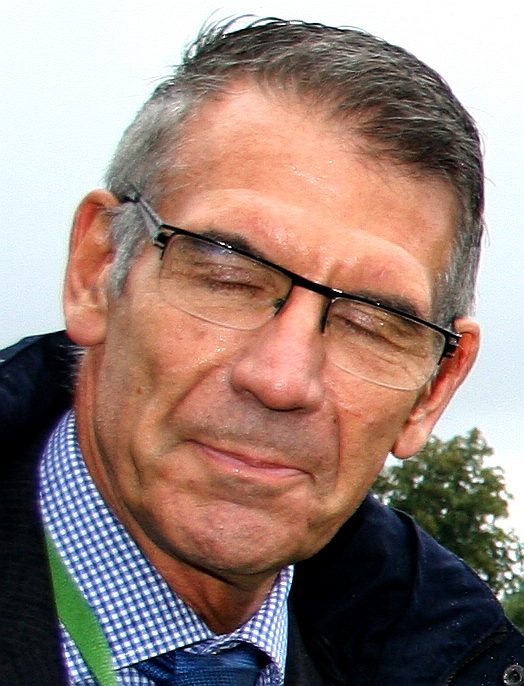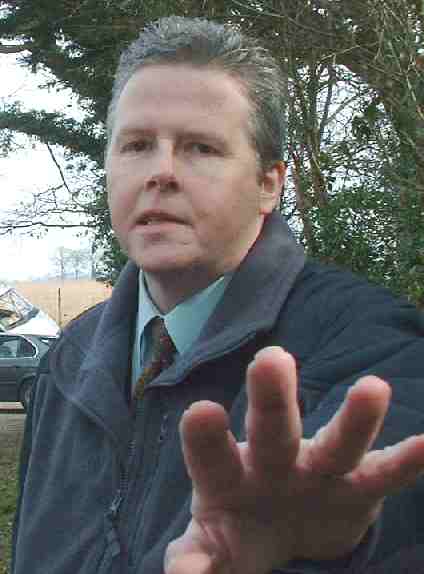|
GREG CHUTER
|
|||||||||||||||||||
|
WATER CONTAMINATION - If houses are built on the hill that supplies the last surviving well in Herstmonceux, all of those who presently enjoy a sustainable water supply are likely to be poisoned by pesticides from the gardens of the proposed housing. In addition, where the hard standings of the proposed 70 houses are to be gully drained to a point lower than the twin wells, soakage that supplies the wells will be diverted away potentially starving the wells of water, save that from the garden areas. The amusing cartoon above portrays the situation that perhaps the developers were not aware of, when they bought into a situation that they should have been able to rely on. Unfortunately, the council concerned and the advisers to the original applicants appear to have been less diligent than they might have been in the rush to profit from a windfall situation.
At the time of writing, the planning officers in charge of an application to build 70 houses on a field that supplies water to historic wells in Herstmonceux are Claire Turner and Christopher Bending.
Clarion Group Housing Limited are working with Thakeham Homes Limited and Latimer Developments Limited, following on from the applications of Tim Watson in 2014 and Gleeson Developments Limited in 2015.
This application is/was to build on a green field site that was purchased by Tim Watson as an investment many years ago. Tim Watson, a local estate agent, abandoned his application, presumably because of identity and potential conflicts of interest locally with the Parish and District Councils, because, exactly the same application was filed with a name change in 2015 by Gleeson Developments Limited, presumably a smoke and mirrors device. If the parties may wish to clarify the situation for us, we'd be pleased to publish any corrections, but as it stands it reads as though their council pals managed to push this one through for old times sake - with the help of all the usual suspects.
Around three hundred local residents were opposed to the application, leading Marina Brigginshaw to give a presentation in the village hall at Herstmonceux, but despite this exceptional turnout, the Parish Council ignored those representations and approved the application. We do not know of any specific reason for the wishes of the public being ignored, and this may become the subject of investigation as to interests and declarations at both Parish Council and District Council levels.
It is suspected that members of Wealden passed the application to in some measure gain revenge on the previous occupier of the old electricity Generating Works while at the same time racking up rates and the Community Infrastructure Levy to keep their highly paid officers in the lifestyle that they have become accustomed to. If that proves to be the case, then the grant of permission will have been an abuse of process.
We are though looking for other anomalies, such as the case officers not correctly advising the Members of this Council as to applicable statute, their Local Plan and National Planning Policy, where there appears to be more than one failure to advise - now the subject of investigation.
For starters, Herstmonceux has only one small school and could not cope with the additional children, adding to carbon miles to bus the children to other schools on a daily basis.
Access to the site is from a busy road at an inconvenient junction without the necessary visibility splay to cope with speeds of 40 miles per hour and more and braking as trucks and the like enter the village from the east along seriously potholed roads.
Sewage disposal in a potential issue that Wealden were forced to obtain Counsel's Opinion on to be able to proceed at all, though this Opinion is only that, a sort of insurance policy that at least they tried to cover their tracks; another questionable tactic - and an opinion is only an opinion until it is challenged. We would like to see this opinion and details of the payment and authorisation for obtaining it. No opinion was obtained as to groundwater pollution, despite environmental legislation:
The Environmental Permitting (England and Wales) Regulations 2010
Water Pollution Offences *
discharging trade or sewage effluent into inland freshwater, coastal waters and relevant territorial waters *
cutting or uprooting substantial amounts of vegetation in any inland freshwaters, without taking reasonable steps to remove it.
Penalties
That the developers and local authorities had reasonable cause to suspect that the proposed development would be likely to cause groundwater contamination and worked together to bring about that contamination, without any conditions or revision to prevent occupiers, site managers and the like from using:
1. Herbicides
is likely to add to the quantum of any fine and the time to be served.
F.A.O. Greg Chuter MA MCIfA
TRACKED POST
23 July 2018
You are telling us that contamination is not an archaeological matter, but depriving the well of ground water and poisoning it at the same time, as will happen if houses are built as per the outline plan, certainly seems to us to be straying into archaeology territory. Hence, it must fall to be considered by the Department of Culture Media and Sport, and/or the
Secretary of State for Housing, Communities & Local Government,
English
Heritage and Historic
England.
WD/2015/0090/ HERSTMONCEUX VILLAGE CONDITIONS A - Z INDEX
WEALDEN'S OFFICERS FROM 1983 TO 2018
Abbott Trevor - Alcock Charmain - Ditto - Arnold Chris (Christine) - Barakchizadeh Lesley - Paul Barker - Bending Christopher Black Julian - Boakes Beverley - Bradshaw Clifford - Brigginshaw Marina - Brown Ashley - Coffey Patrick - Douglas Sheelagh Dowsett Timothy - Flemming Mike - Forder Ralph - Garrett Martyn - Goodwin Daniel - Henham J - Holness Derek Hoy Thomas - Johnson Geoff - Kavanagh Geoff - Kay Ian - Kay I. M. - Barbara Kingsford - Lant Charles - Mercer Richard Mileman Niall - Moon Craig - Moss Douglas, J. - Nuttall Christine - Pettigrew Rex - Phillips David - Scarpa Victorio - Scott Trevor Kevin Stewart - Turner Claire - Wakeford Michael. - Whibley David - White, George - Williams Kelvin - Wilson Kenneth - White Steve
MISFEASANCE & MALFEASANCE
When an officer of the courts omits to include evidence that he or she knows is relevant to a hearing, that is termed misfeasance in public office. Where an officer then tries to cover up his or her misfeasance (as did Ian Kay in the Stream Farm matter), or J Douglas Moss did in the Old Steam House case, that becomes malfeasance. The difference is that misfeasance is a civil wrong, whereas malfeasance is a criminal offence. The leading case precedent on malfeasance is: R. v Bowden 1995 Court of Appeal (98 1 WLR), where police constable Bowden failed in his duty to protect a member of the public.
The only defence that Wealden's officers have in their criminal dealings is that Sussex Police will not investigate any offence committed by their chums at Wealden. The proof of this is the failure of DS Keith Lindsay failed to interview any one of 12 unrelated complainants or the planning or executive officers from Wealden who stand accused.
Where does Claire Turner fit into all of this? At the moment we do not know and we are giving Mrs Turner the benefit of the doubt. In other words we accept that she is innocent of any hand in the approval of the 70 house windfall grant at Herstmonceux, unless and until fresh evidence becomes available to suggest otherwise.
Vicarage Lane, Hailsham, East Sussex, BN27 2AX T: 01323 443322
LINKS & REFERENCE
https://web.zurich.co.uk/ http://www.royalmail.com/ http://www.sussex.police.uk/ http://www.wealden.gov.uk/
HOME | AFFORDABLE | CLIMATE | DEVELOPERS | ECONOMY | FLOOD | HISTORY HOMES | LADDER | MORALS | POVERTY | PROPERTY | SLAVERY | WEALTH
HOME | A-Z INDEX | MEMBERS | MPS | OFFICERS
|
|||||||||||||||||||
FAIR USE NOTICE
This site contains copyrighted material the use of which has not always been specifically authorized by the copyright owner. We are making such material available in our efforts to advance understanding of environmental, political, human rights, economic, scientific, and social justice issues, etc. We believe this constitutes a 'fair use' of any such copyrighted material as provided for in section 107 of the US Copyright Law. In accordance with Title 17 U.S.C. Section 107, the material on this site is distributed without profit to those who have expressed a prior interest in receiving the included information for research and educational purposes. |
|||||||||||||||||||
|
This site is protected under Article10 of the European Convention on Human Rights and Fundamental Freedoms.
|













